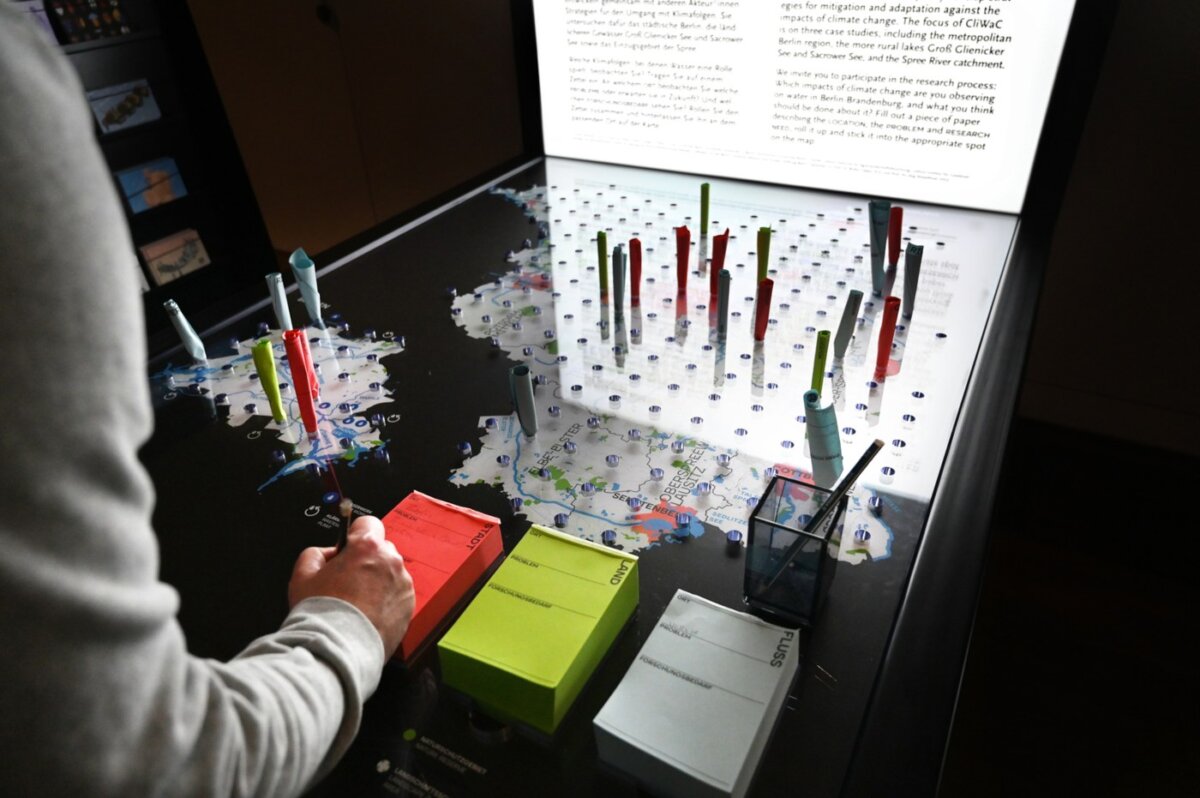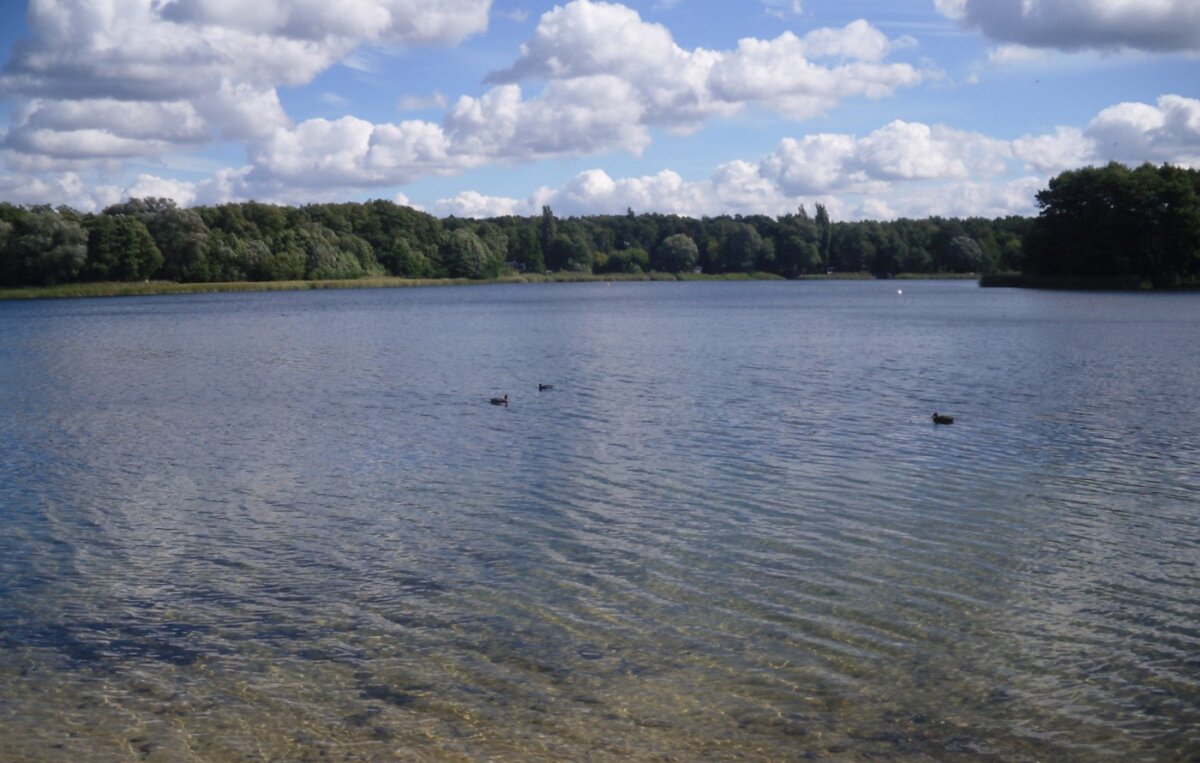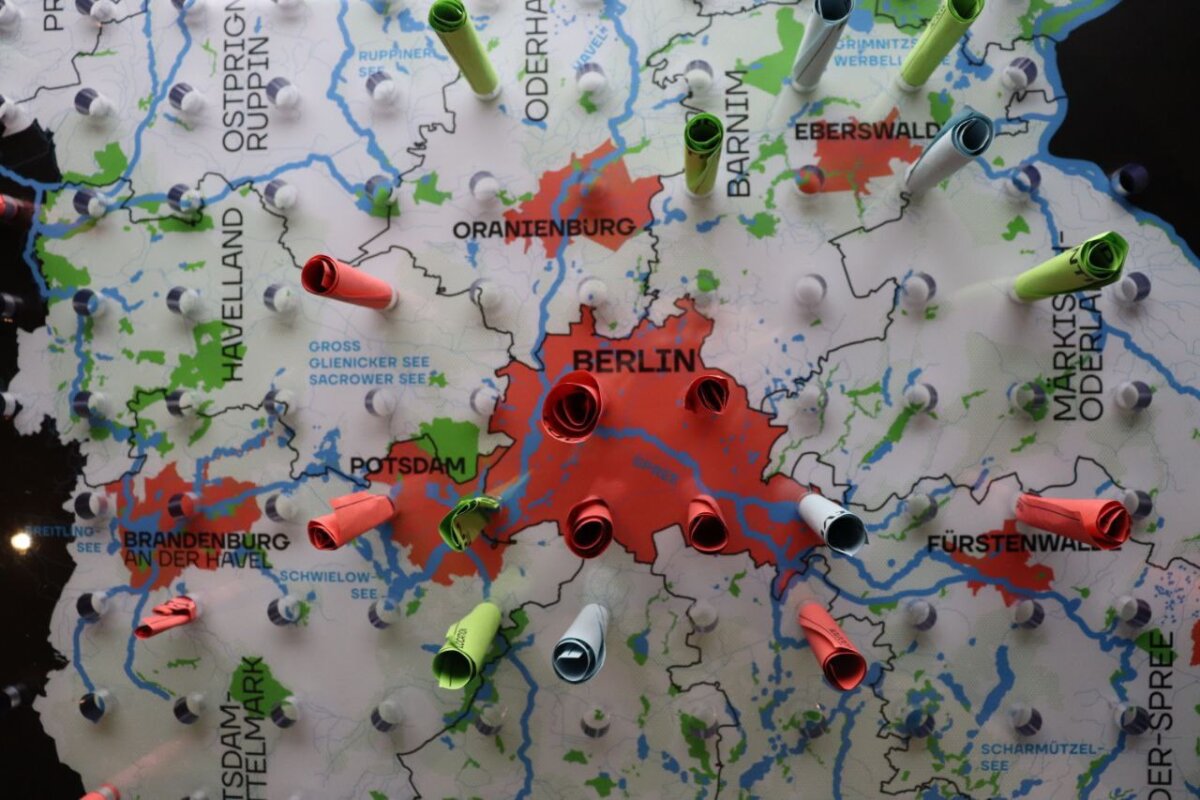How do ecosystems change with rising temperatures? Where are potential flood plains in the Berlin-Brandenburg region? And how must cities and municipalities manage their (waste) water in order to protect people and the environment in the future? Researchers from the Einstein Research Unit “Climate and Water under Change” (CliWaC) are asking these and many other questions. And to better understand the regional changes in Berlin-Brandenburg related to water, they are asking visitors at the Humboldt Lab for help.

© Einstein Research Unit „Climate and Water under Change“ (CliWaC) / Grafik: Julia Neller / Foto: Julia Neller
City, Countryside and River under Change
A new research station in the exhibition After Nature allows visitors to share their own observations on water-related risks of climate change in the Berlin-Brandenburg region with the research unit CLIWAC. The acronym stands for “Climate and Water under Change” and is a research consortium made up of 52 scientists from various disciplines at Berlin universities and other research institutions. This combination of social and natural sciences enables an interdisciplinary perspective on the topic of water.
But the group is not only interested in combining different disciplinary perspectives, as social and cultural anthropologist Desirée Hetzel explains: “In CliWaC, we want to bring together experts in the field and everyday experts to think together about how we deal with water.” This is where the exhibition visitors come into play,” says Hetzel. “Local people are often the ones who can draw on direct observations and experiences. In addition, measures need to be integrated into social discourse and practices.”
The CliWaC researchers are currently investigating three case studies categorised as city, countryside and river. Specifically, researchers are studying heavy rainfall in the urban area of Berlin, the lake systems of Groß Gienicker See and Sacrower See in rural Brandenburg, as well as the Spree River and its catchment area.

